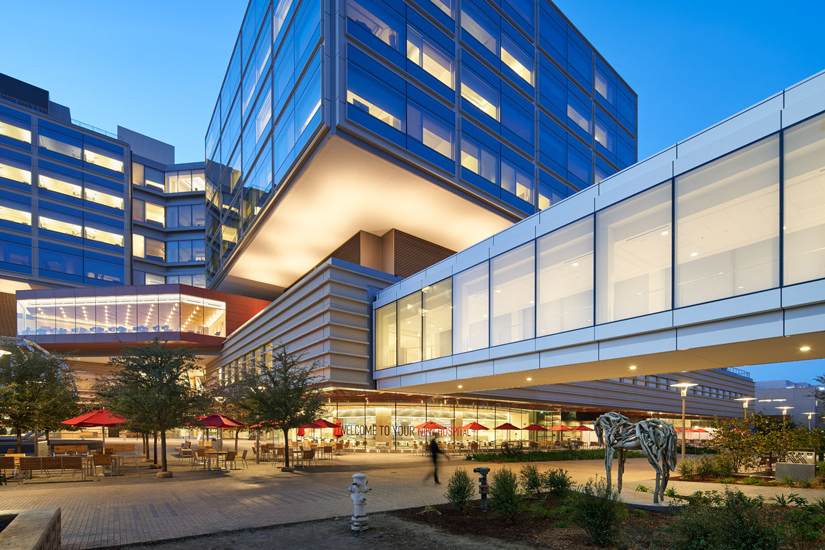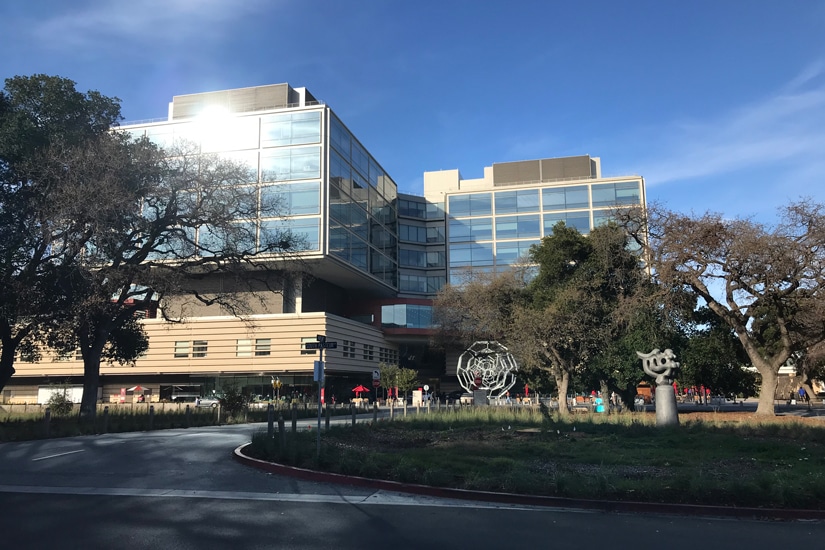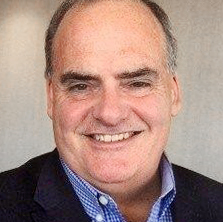| |
It took a team of thousands to get the first patient across the bridge to Stanford Health Care’s new hospital facility in the heart of Stanford University’s Palo Alto campus. For 16 years, planning and construction had been underway on the building and Kevin Curran, director of construction, and Grace Hsu, director of design management, knew the utmost commitment it had taken to, as Hsu describes the experience, “deliver this project of a lifetime when our community needs it the most.”
Begun in 2004 as response to what Curran calls “the mother of all unfunded mandates,” stipulations that California hospitals meet seismic regulations compliance, project strategy expanded through the years. By the time the new Stanford hospital, designed by world-renowned architect Rafael Vinoly and Partners, opened in November 2019, not only would the hospital be earthquake ready but also the planners had created multiple forms of renewal, including new-era healthcare, patient rooms, and technologies. The fresh vertical building allows for more of everything, including pride in the facilities. “Even the grab-and-go yogurt in the cafeteria is branded with an image of the building,” Curran says.

With an architecture background and years in healthcare, Curran has the vision and the skill set to realize grand plans and micro details. Involved in initial planning, he returned in 2013 for groundbreaking and held oversight responsibility for quality control and budget.
Like the patient towers that rise above the hospital, Curran builds specific teams and also the communication between them. For the duration of the build, about 250 individuals worked from a colocation of 28 single-wide trailers across the street from the new hospital, facilitating a constant flow of information. This included the Rafael Vinoly architects and its key design consultants, contractors Clark/McCarthy and its subs, and a myriad of specialty consultants and subcontractors.
“You have to break it into manageable pieces,” Curran says of directing such a massive project. “The term ‘silo’ has such negative connotations, but you have to break it up; you have to make sure the silos are not negative.” He scheduled daily meetings and huddles with specialists and subcontractors and integrated inspectors and expert engineers into each team.

Hsu came onto the project in 2009, to “challenge and steer both internal and external design partners to a cohesive outcome that supports our Stanford brand in the built environment.” While, she explains, long durations are the nature of California’s Office of Statewide Health Planning and Development projects, working through the Great Recession and in California’s tight labor market meant that she and Curran contended with material and personnel shortages. In the face of these difficulties, Hsu says, “the agility to recover or pivot quickly is the key to realizing achievement.”
Curran likes to joke that, due to regulations in California, “you get half the hospital for twice the price.” But while patients might not see it, they receive services in a building with state-of-the-art base isolation technology, hundreds of friction pendulums, and other engineering feats. They might not feel it while sitting in a waiting room, but the hospital is constructed to be up and running after an 8.0 earthquake, an impressive feat at any price tag. The new Stanford hospital also now boasts its four nursing towers—30-foot floating cantilevers—of single-patient rooms, complete with stunning California views.
Hsu and Curran arrived at the project understanding that, with so many years of build ahead of them, inevitably tech would change before the first patient visit. The team worked with this in mind. For example, they deferred specific design on some surgical units for three years until they confirmed the current and right equipment. “It takes constant reevaluation,” Curran says. However, while exact details shifted, Stanford’s three-pronged commitment to patient care, precision health, and research remained their overarching guide.

Unlike other systems with multiple hospitals and the ability to refine designs over time, Curran says, “Stanford is a one-of-a-kind. We had one shot at it. It is very specialized.” In its 28 operating rooms, the researched-based hospital has blocks specialized for cardiac, orthopedics, and neurology. The construction director explains that the hospital can do very unique procedures. To some extent, Curran offers this specialization as a defense of the construction profession. “There is a pressure to design faster,” he says. “But we design buildings that have never been built before. Most of them are one-time events with thousands of pieces of glass, built by highly skilled craftsmen and tradesmen that are few and far between.”
In explaining their remarkable achievement, both Hsu and Curran agree to the essential importance of the team’s dedication and consistency. “We were all dedicated to completion. We were on it to the end and had tremendous management support and the faith in us to get it done,” Curran says.
Though the new hospital is up and running, Stanford’s campus continues to transform with upgrades to the nursing units in part of the original hospital located at the 300 Pasteur Drive building. However, Curran and Hsu have ceded the single-wide trailers to another team and moved to different Stanford initiatives. During the project, Curran invited a group of California academic hospitals to share concerns and best practices. Both know that the past decade has been a career defining one.

Within months of that first patient rolling across the bridge to so much fanfare, the hospital has been put to a massive test: response to an international pandemic. Curran says, “We have heard from our emergency department clinical staff that the new hospital is a tremendous improvement in dealing with COVID.”
He says that, from drive-through testing and in-car telehealth in the purpose-designed, mass-casualty/triage garage area to the flexible mechanical and HVAC systems and controls, the expanded Level 1 Trauma Center and the whole hospital has proved up to this first seismic event in patient care.


